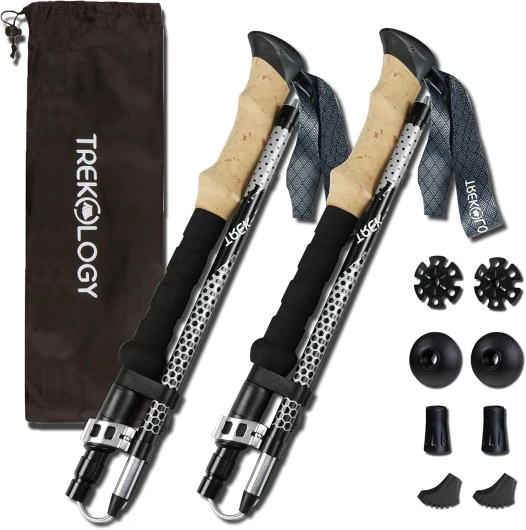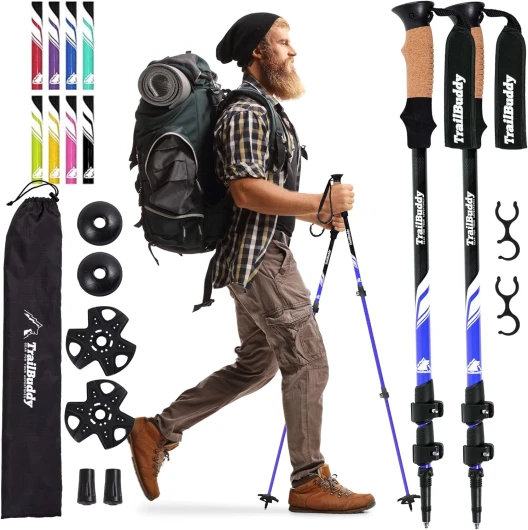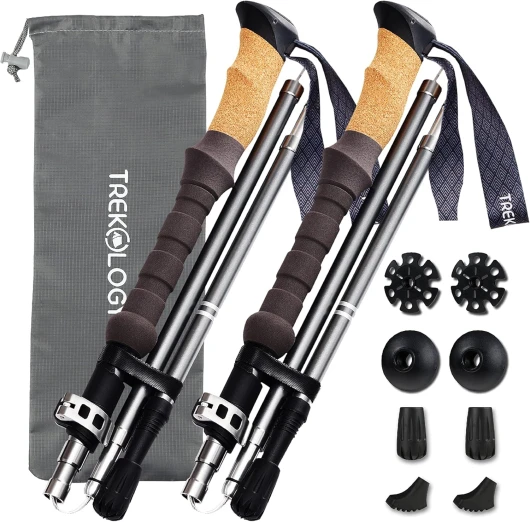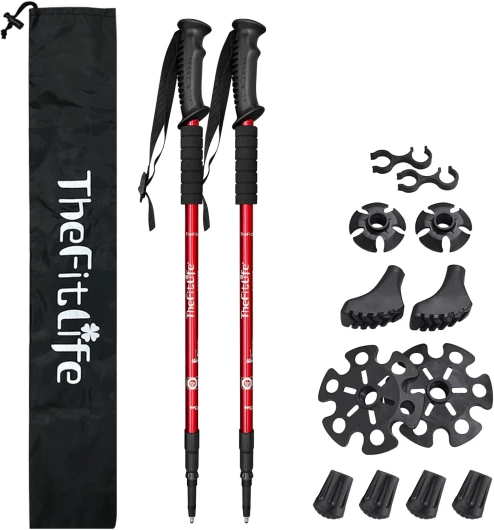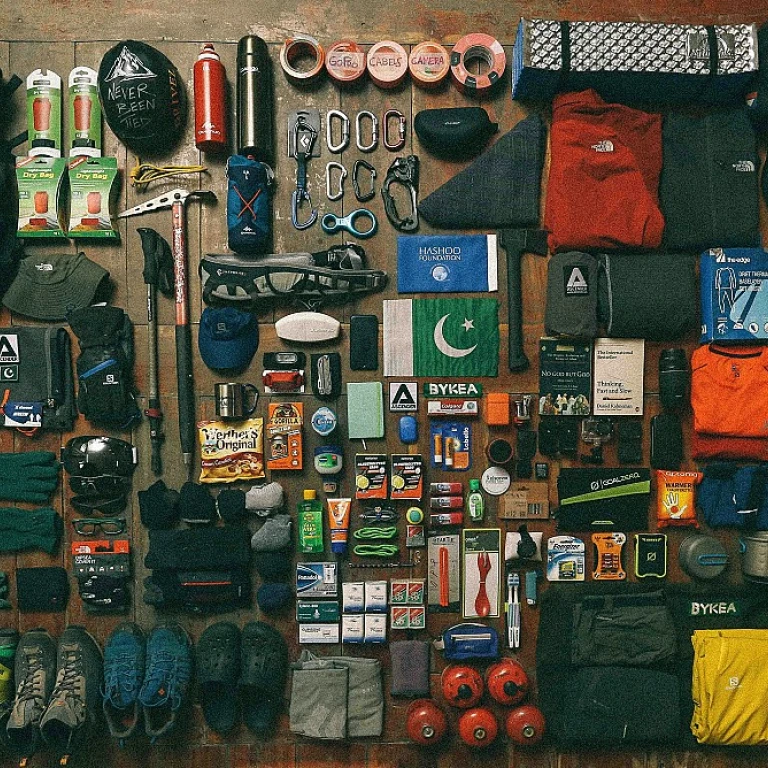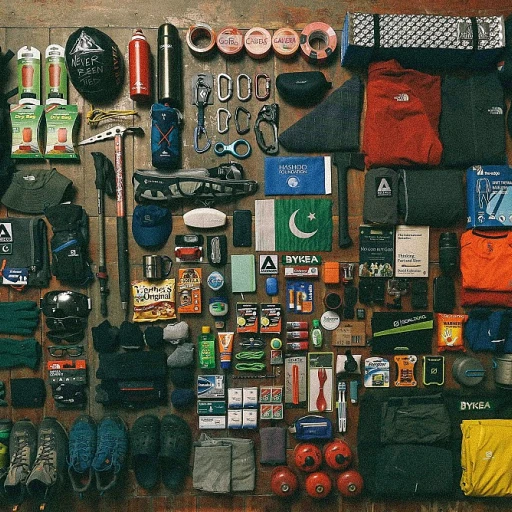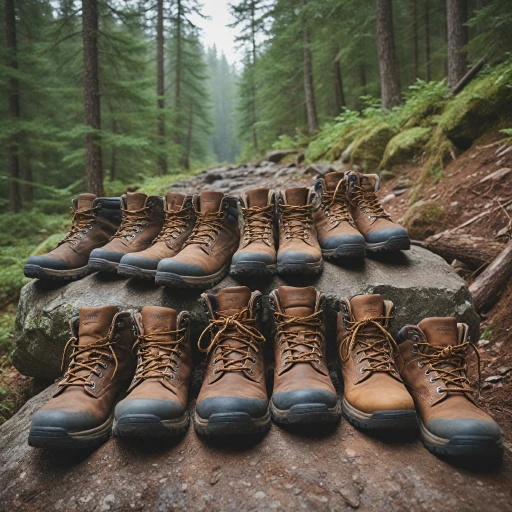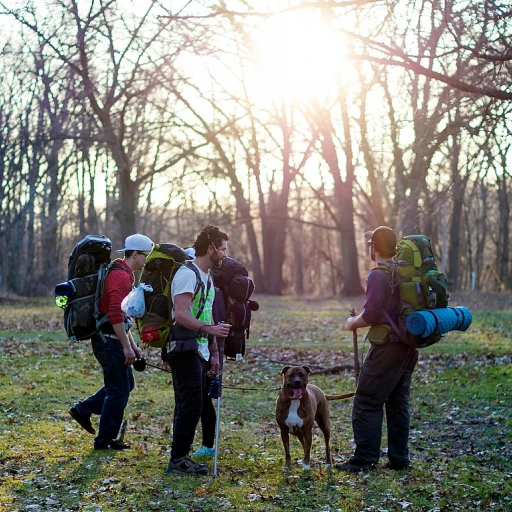
Understanding the Importance of Trekking Poles
Understanding the Role of Walking Aids on Trails
Trekking poles have become an indispensable tool for outdoor enthusiasts and hikers at all levels, thanks to the numerous benefits they offer. Incorporating these tools into your trekking routine not only improves balance and stability on challenging terrain but also reduces joint strain during long hikes. Walking aids, such as hiking poles, play a pivotal role in maintaining a safe and enjoyable hiking experience. As you journey through trails, poles keep you balanced on uneven surfaces. Whether crossing a rocky path, trudging through mud, or tackling hard surfaces, poles provide the support you need. With features like rubber tips for traction and baskets for soft terrains, these hiking essentials are designed to adapt to various conditions, ensuring you remain steady regardless of the trail. Studies have shown that using trekking poles can significantly reduce the impact on knees and ankles, offering protection from fatigue after a long day on rugged terrains. This is especially beneficial for hikers of all ages, making poles an excellent investment in your trekking gear. Furthermore, these posts enhance your hiking experience by improving your posture, encouraging an upright position that eases breathing and prolongs endurance. The combination of using trekking poles and wearing proper hiking gear can tremendously enhance your adventures. For those looking to dive deeper into the advantages of these walking aids, consider exploring how they can enhance your hiking experience, providing valuable insights and tips to get the most out of your time in nature. Discover more about the benefits here.Choosing the Right Trekking Poles for Your Needs
Finding Your Perfect Fit
When choosing trekking poles, it's crucial to account for the specific needs of your hiking adventures. Not all poles are created equal, and selecting the right one can greatly enhance your hiking experience. Here are some key considerations:
- Adjustability: Opt for adjustable poles as they allow you to tailor the length to suit various types of terrain or walking adjustments. Black Diamond trekking poles are popular for their reliable locking mechanisms.
- Material: Poles are commonly made from aluminum or carbon fiber. While aluminum poles are durable and more budget-friendly, carbon fiber poles are lighter, making them ideal for long-distance treks.
- Grip: Evaluate the material and texture of the grip. Foam grips offer excellent comfort and wicking properties, while cork handles, although more expensive, provide a molded, comfortable grip that conforms to your hand over time.
- Tip Types: Incorporate trekking poles with interchangeable tips for versatility. Rubber tips are perfect for hard surfaces, while carbide tips provide excellent traction on ice or rocky terrains. Explore alternative hiking supports, such as wooden hiking sticks, if you prefer natural options.
- Baskets: Use removable baskets to prevent poles from sinking in soft ground, like mud or snow. Always keep spare replacement tips and baskets in your gear as part of your preparedness plan.
For those actively engaged in hiking forums or communities, participating can provide valuable insights and tips from fellow hikers. Whether you're a newbie or a seasoned trekker, choosing the right trekking poles can make a marked difference in your comfort and efficiency on the trail.
Proper Techniques for Using Trekking Poles
Mastering the Use of Trekking Poles
Using trekking poles effectively is crucial for enhancing your hiking experience. Proper technique not only improves stability but also helps maintain endurance over long trails. Here are some key tips to get you started:- Get the Right Length: Adjust the poles so your elbows are at a 90-degree angle when holding the grips. This setup ensures optimal comfort and efficiency.
- Stride with the Trail: For natural walking flow, alternate the poles with your steps. Move the right trekking pole with your left foot and the left pole with your right foot.
- Firm Yet Flexible Grip: Avoid gripping too tightly. Let the straps bear part of your weight to reduce hand fatigue. Adjust the pole straps so they're comfortably tight without cutting off circulation.
- Navigate Varied Terrain: On uphill treks, shorten the poles to keep balance and traction. For downhill, lengthen them for better stability, allowing you to lean forward safely.
- Pole Tips for Different Surfaces: Use rubber tips on hard surfaces to prevent slips and reduce noise. Switch to carbide tips for mud or rocky terrain for enhanced grip. Don’t forget to check the condition of your pole tips regularly as they can wear out over time.
- Keep Your Baskets: Attach baskets for added support in softer dirt or snow. Small baskets are fine for most trails, but larger ones are ideal when navigating muddy terrains.
- Perfect Your Timing: Practice timing your poles in sync with your strides. This synchronization is particularly beneficial during cross-country trekking.
Integrating Trekking Poles with Hiking Boots
The Symbiosis of Trekking Poles and Hiking Boots
To maximize your outdoor experience, trek in harmony by ensuring your trekking poles and hiking boots function together effectively on the trail. This union is not just about creating a smoother hike, but also enhancing your stability and safety.Before you step onto the trail, it’s crucial to choose the right gear. Your hiking boots should offer a solid grip on varying terrain, while being comfortable for long hours of walking. Pair them with poles that have suitable tips — carbide tips for rocky, hard surfaces and rubber tips for smoother paths. This combo prevents slipping, regardless of your trail’s condition.
Join any expert forum and you'll often find registered users sharing how the dynamic of matching boots to poles can make all the difference. One important detail is ensuring that your hiking boots complement the type of trail you are tackling. If you're moving over mud or softer terrain, choose replacement tips with larger baskets for your poles to prevent them from sinking. When navigating uneven or rough paths, ensure your hiking boots have sturdy soles to manage the terrain effectively and use poles trekking to maintain balance.
Using the poles effectively requires correct body mechanics. With flat terrains, keeping the poles vertical allows for a natural swinging motion. When climbing uphill, shorter poles can greatly assist in maintaining momentum with each step. On the descent, extend them further to maintain balance, ensuring your hiking boots absorb the ground shock.
Walking poles become invaluable when tackling lengthy trails, allowing you to distribute your body weight, ultimately making your hike more sustainable over time. Aligning your strategies for using trekking poles with the strengths of your hiking boots can significantly stabilize your hikes regardless of the challenges posed by the hard surfaces or tougher paths ahead.
Remember, the harmony between poles and hiking boots is an ongoing relationship. Don't hesitate to a reach out to your fellow registered users for advice on preferred products or techniques that enhance efficiency in your walking adventures. Embracing their tips, such as switching pole tips or adjusting baskets, can provide the friendliest feedback and reply key insights for maintaining that ideal hiking synergy.
Maintenance and Care for Trekking Poles
Regular Cleaning and Inspection
Trekking poles, much like other essential hiking gear, require regular maintenance to ensure their durability and performance. After each hiking adventure, it's vital to clean your poles. Use water and a soft brush to remove any debris, mud, or dirt that may have accumulated. Pay particular attention to the pole tips, as these are often in contact with hard surfaces of the trail. For more difficult terrain, such as mud, poles with removable rubber tips can be especially helpful. Consider replacing them if they show signs of wear.
Component Check
Regularly check various components of your trekking poles. Ensure the locking mechanisms are secure and functional. This is crucial because the poles keep you stable on different terrains by adjusting to different lengths. Make sure to inspect the rubber feet or carbide tips, as these directly impact your stability and safety on the hike. If any parts seem worn out, registered users can source replacement tips or baskets from manufacturers or outdoor forums.
Storage Tips
Proper storage is another critical aspect of maintaining your poles. When not in use, keep them in a dry location. This precaution helps prevent rust and other damage over time. If your trekking poles are collapsible, disassemble them before storage to avoid unnecessary tension on the joints and posts.
Forum Advice and Tips
Engaging with other members in hiking forums can offer valuable advice on maintaining your trekking poles effectively. There's a wealth of experience in these communities, with many users sharing real-world experiences and tips. Consider joining a location-based hiking forum to get specific insights related to your trails and conditions.
Advanced Tips for Experienced Hikers and Mountaineers
Pro Tips for Maximizing Trekking Poles on Challenging Terrains
For seasoned hikers and mountaineers seeking to elevate their trekking experience, the integration and precise handling of trekking poles are crucial. Understanding how to adapt your technique on varied terrains will help you maintain balance and reduce fatigue during extended hikes.- Adjusting to Terrain: On steep ascents, shorten your trekking poles slightly to propel yourself uphill efficiently. Conversely, lengthen them on descents for added stability, especially on rugged or slippery paths.
- Choosing the Right Pole Tips: Equip your poles with rubber feet for hard surfaces to enhance grip and diminish trail impact. On challenging trails laden with rocks and mud, swapping to carbide tips ensures firm footing and protects against accidental slips.
- Using Wrist Straps Effectively: Integrate the wrist straps of your walking poles into your technique to alleviate the strain on your hands. Insert your hand from below and adjust to a comfortable position to bear some weight directly on your arm muscles.
- Mastering Pacing Techniques: Synchronously using poles with your hiking rhythm can conserve energy. Consider alternating poles with each step like a metronome to keep you moving at a steady pace without overexertion.
- Adapting Baskets for Conditions: Apply baskets to prevent poles from sinking in softer ground or snow. Selecting the right basket size, depending on your trail conditions, can significantly impact your trekking efficiency.

